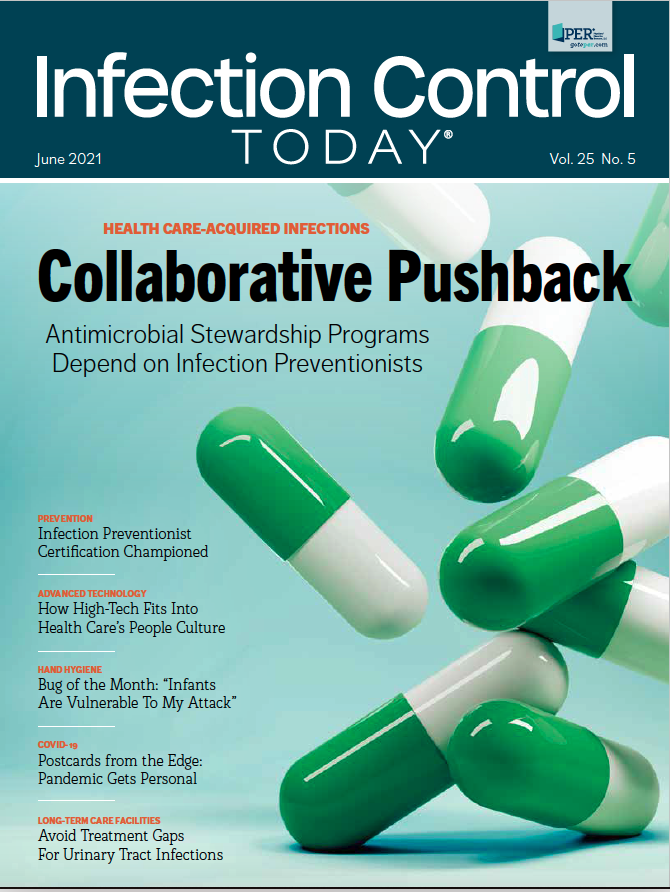Infection Control Certification: What Are You Waiting For?
Stand with the 7000 other infection preventionists who decided it’s important to be certified. It isn’t easy, but the satisfaction of this achievement far outweighs the preparation needed to pass.
The dictionary defines certification as “the action or process of providing someone or something with an official document attesting to a status or level of achievement.” When certification pertains to health care, the definition is “a voluntary process by which a nongovernmental agency grants a time-limited recognition to an individual after verifying they have met predetermined and standardized criteria.” To become certified, an individual must meet eligibility requirements and pass an assessment.
Infection preventionists (IPs) can attain this level of achievement, or certification, through the Certification Board of Infection Control and Epidemiology (CBIC) examination once they meet the eligibility requirements and feel ready to take the exam. This initial exam, although not perfect, does assess many of the areas that an IP with 2 years of health care experience should know.
It is a broad assessment of the subject matter that all IPs in a health care setting should be familiar with:
- Identification of infectious disease processes
- Surveillance and epidemiologic investigation
- Preventing/controlling the transmission of infectious agents
- Employee/occupational health
- Management and communication
- Education and research
- Environment of care (EOC)
- Cleaning, sterilization, disinfection, and asepsis
This list may look daunting, but 2 years of on-the-job experience goes a long way toward helping you prepare for the initial exam. The daily tracking and tracing of transmissions, working on the construction and renovation of infection control risk assessments, participating in EOC rounds, auditing insertion practices, and reporting and investigating outbreaks are what that initial certification examination is all about. Preparing for the exam helps us learn, grow, and become better IPs.1 Better IPs means better outcomes for patients, and this is what infection prevention is about.
Sharon Ward-Fore, MS, MT(ASCP), CIC

This day-to-day learning can only come from actual experience in a health care setting. I firmly believe this is the best way to help IPs become the best they can be. I am a visual learner and learned most of what I know from being out on the floors, watching, listening, and questioning everyone who would let me bother them. What an eye-opener it can be to watch actual practices versus a training module on central line insertion!
That’s why the eligibility requirements for first-time or lapsed candidates are scheduled to be changed on June 1, 2021.
First-time candidates, candidates who have not successfully passed the examination, and those whose certifications have lapsed and who wish to become certified again will need to have all these requirements:
- Complete postsecondary education in a health-related field including but not limited to medicine, nursing, laboratory technology, or public health
- Direct responsibility for the infection prevention program activities in a health care setting
- Work experience, defined as active engagement in infection prevention and determined by a current job description, for compensation, for a minimum of:
- 1 year of full-time employment
- OR 2 years’ part-time employment
- OR 3000 hours of infection prevention work experience earned during the previous
3 years
And that’s not all. The infection prevention activities must include:
- Identification of the infectious disease processes
- Surveillance and epidemiologic investigation
- Preventing and controlling the transmission of infectious agents
- EOC
- Cleaning, disinfection, sterilization, and asepsis
AND at least 2 of the remaining 3 components:
- Employee/occupational health
- Management and communication
- Education and research
These requirements are the meat and potatoes of infection prevention and are what, I believe, give it value and prestige. This certification is not for everyone because it shouldn’t be. It should be for those actively working in health care supporting health care providers by providing education and training. It is for those who have earned the right to take the test not just because they have a degree but because they learned by “boots-on-the-ground” everyday practice.
This certification shows your dedication to your craft. This is how we distinguish ourselves and stand with other professionals. So take this opportunity to distinguish yourself and get the credit you deserve for your education, experience, and perseverance. Stand with the 7000 other IPs who decided it’s important to be certified. It isn’t easy, but the satisfaction of achievement far outweighs the preparation needed to pass.
This year I am due to recertify my Certification in Infection Prevention and Control (CIC). I have recertified by self-achievement recertification examination (SARE) once and will now recertify using continuing education (CE) credits, such as infection prevention units (IPUs) training, a new option instead of taking the SARE. Recertification feels even more important to me than ever.
During this pandemic everyone thinks they know infection prevention—from my hairdresser, who I have not seen in a year, to the gym attendant, who I have also not seen in a year. They will tell you they are experts in infection prevention. So when I strike up a conversation with someone and mention that I am certified in infection prevention, they are somewhat impressed but mostly curious.
What exactly is recertification? According to the dictionary, it is “to renew the certification of something.”That really doesn’t cover it for me because the intent of CIC recertification is so much more. Recertification of the CIC revalidates all the education and experience that continues to accrue while working as an infection preventionist. Health care is not a static environment. The amount of information, practices, and procedures that change is overwhelming. Recertification challenges IPs to keep up with changes and continue to learn.
Do you remember the definition of certification as it concerns health care from the beginning of this article? Certification: “a voluntary process by which a nongovernmental agency grants a time-limited recognition to an individual after verifying they have met predetermined and standardized criteria.” Time limited. The key words to striving to keep up-to-date with what is happening in your profession. Recertification every 5 years is not exactly popular, but I believe it is necessary so our thinking and practices don’t become stale. It pushes us to keep up-to-date.
The CBIC is responsible for administering these exams. And to its credit, CBIC heard the issues about the SARE and came up with the CE/IPU option for recertification. You can still sit for the SARE or input 40 hours of CE/IPU, the choice is yours.
And the 40 hours of CE must include 6 of 8 of the following learning domains:
- Identification of infectious disease processes
- Surveillance and epidemiologic investigation
- Preventing/controlling the transmission of infectious agents
- Employee/occupational health
- Management and communication
- Education and research
- EOC
- Cleaning, sterilization, disinfection, and asepsis
Do these look familiar?
They are the same categories that are tested in the initial certification exam and the recertification SARE. So you can’t just input a bunch of nonsense. You must participate in specific domains of learning. Even if you work in only 1 setting type, you are expected to stretch yourself professionally and attend other educational learning. This is a good thing. It forces us out of our silos.
I have begun the process of inputting all the necessary CE/IPUs into the CBIC system. Word of advice: Input the CE/IPUs as you get them. Don’t wait and enter them all at 1 time as I have done. It is time consuming. But as the infection prevention professional that I have worked so hard to become, CIC certified, I will keep on plugging. I see the value in the certification and the CE for recertification. You should too. Just do it.
SHARON WARD-FORE, MS, MT(ASCP), CIC, is an infection prevention consultant located in Chicago, Illinois. She is also a member of the Infection Control Today® Editorial Advisory Board.
Reference:
- Candidate Handbook. Certification Board of Infection Control and Epidemiology. Accessed March 25, 2021. https://www.cbic.org/CBIC/2020CandidateHandbook.pdf

Robust infectious disease surveillance, including rapid subtyping of influenza A, is essential for early detection, containment, and public health reporting of novel viral threats.